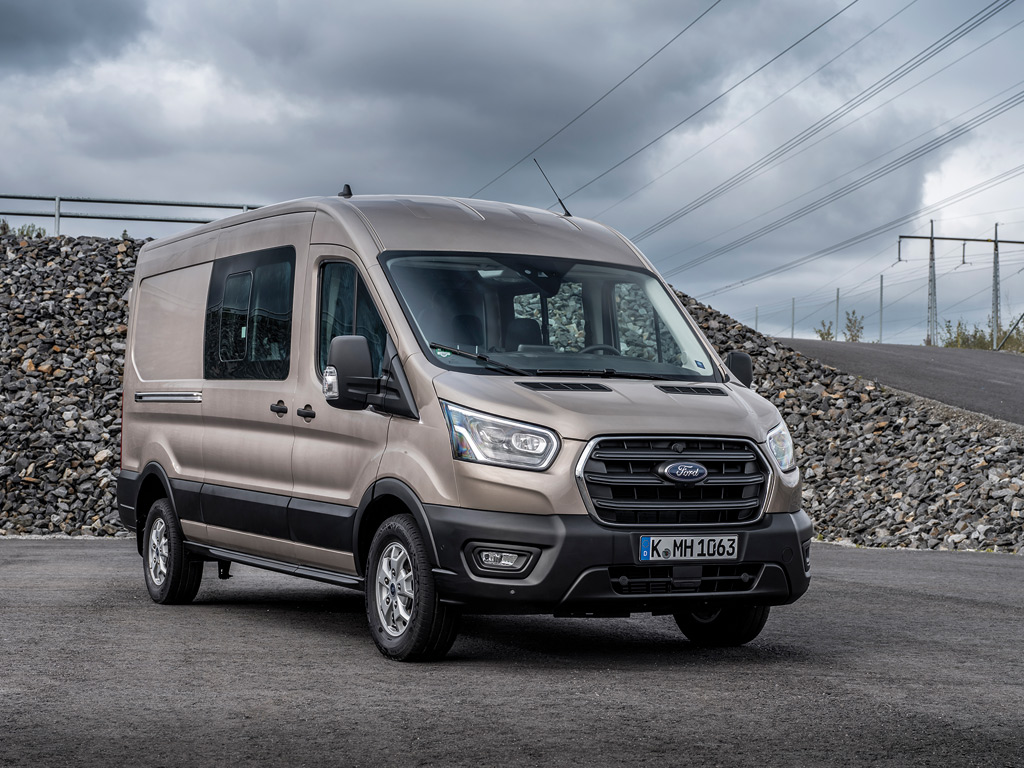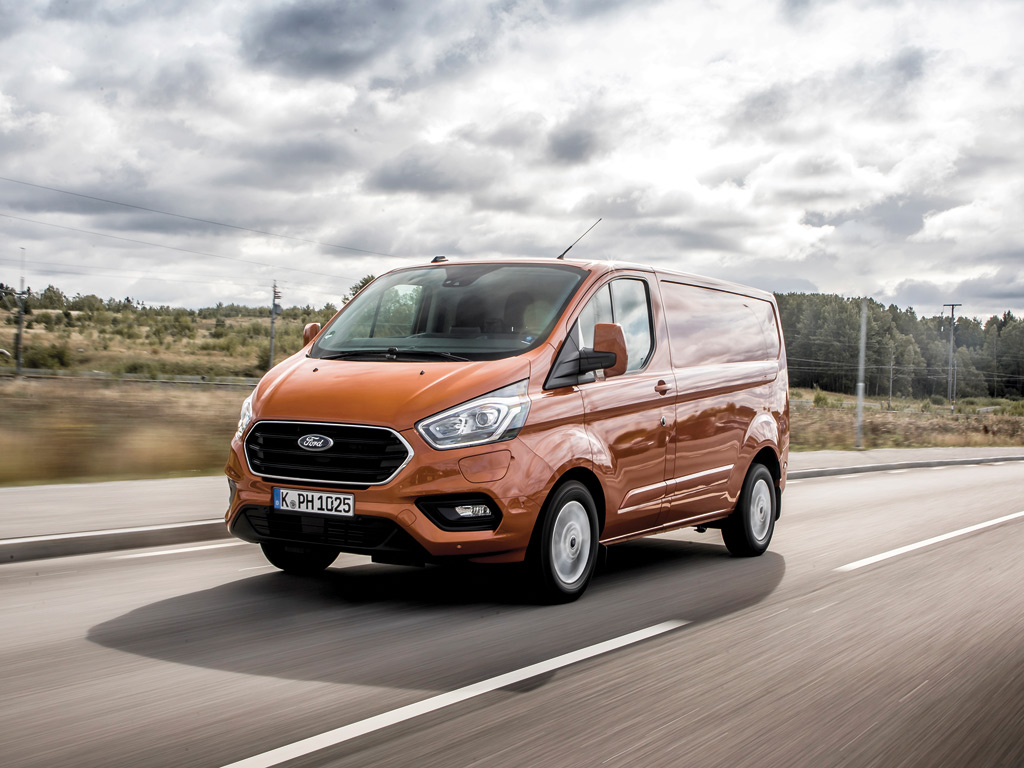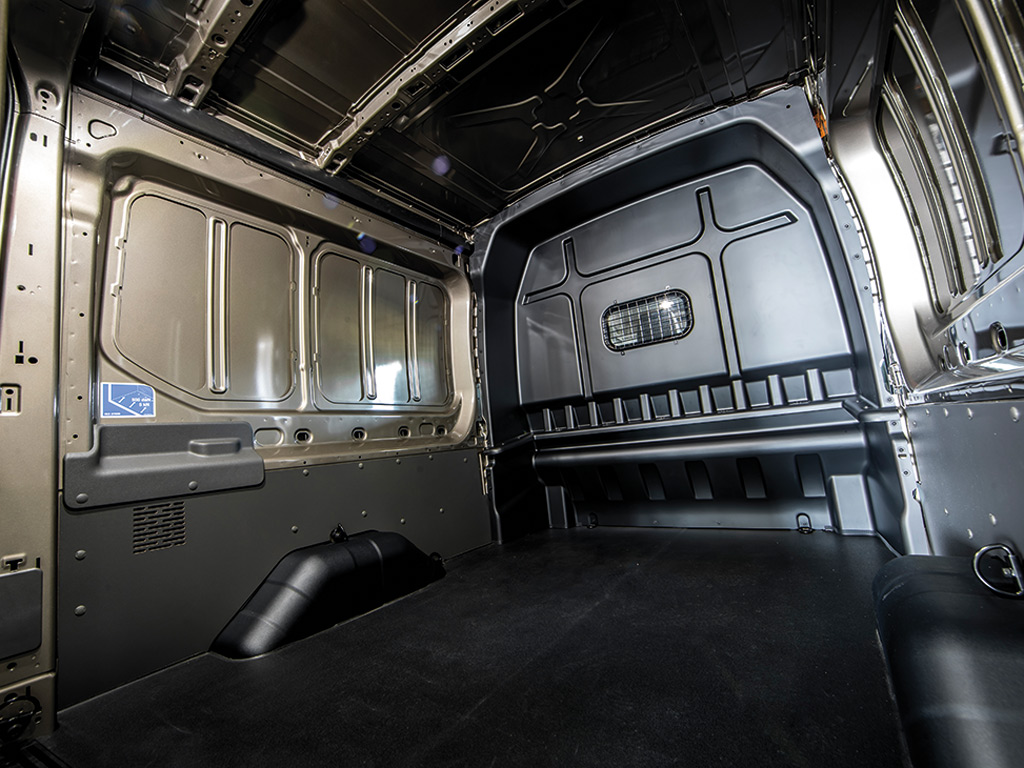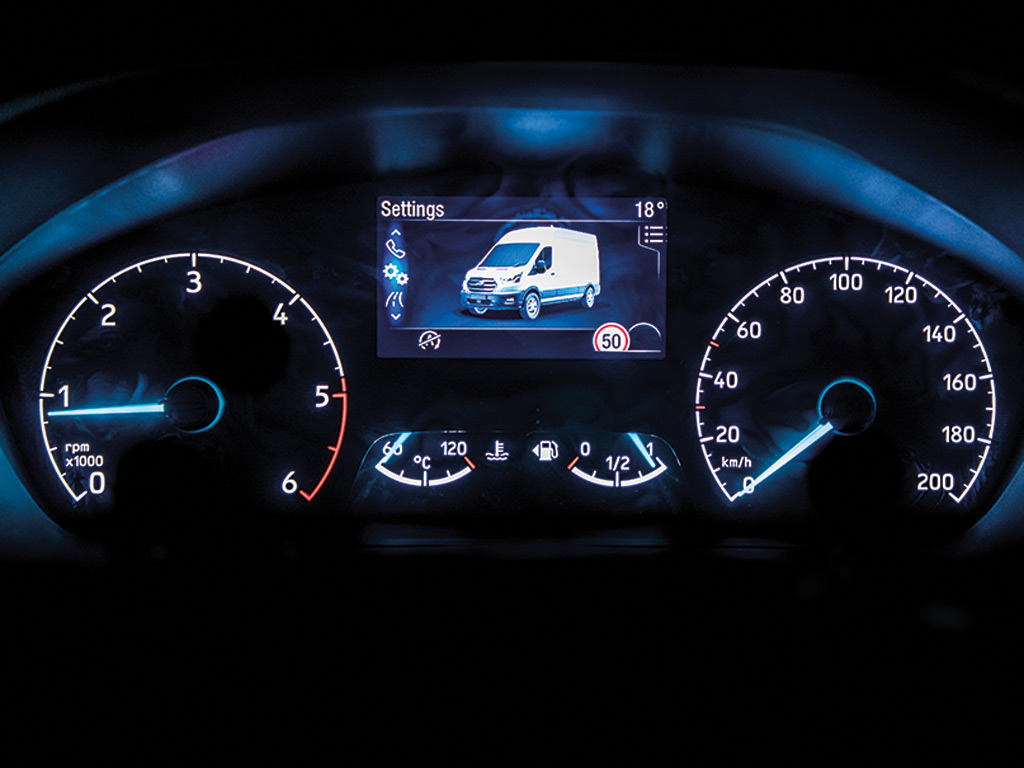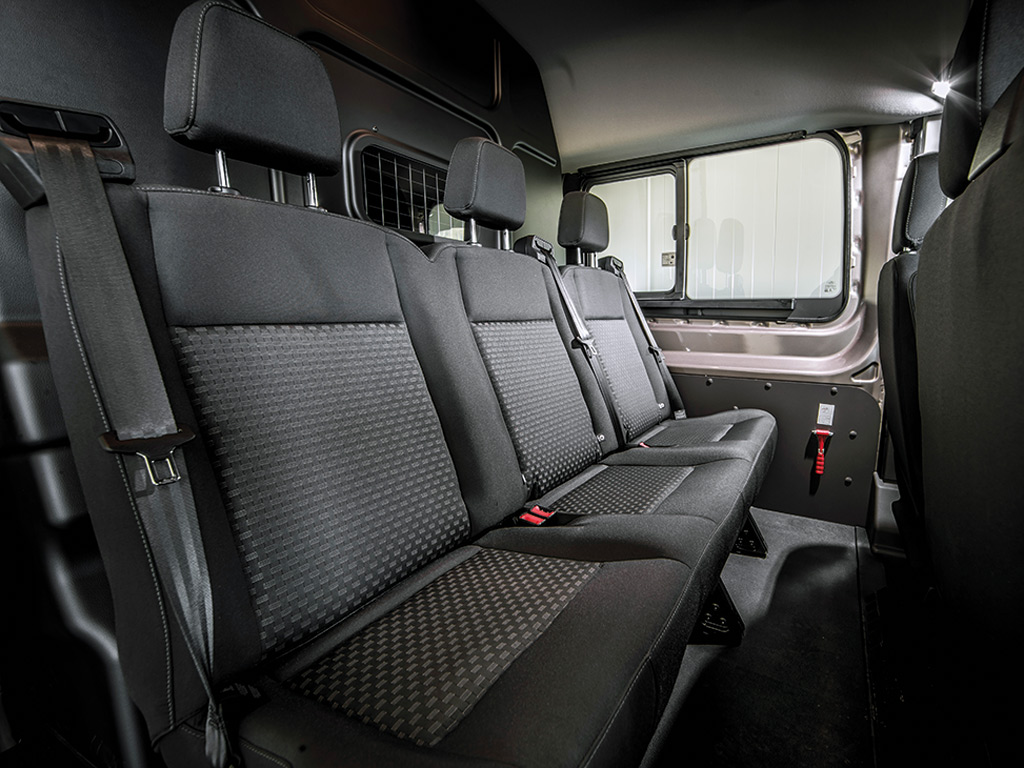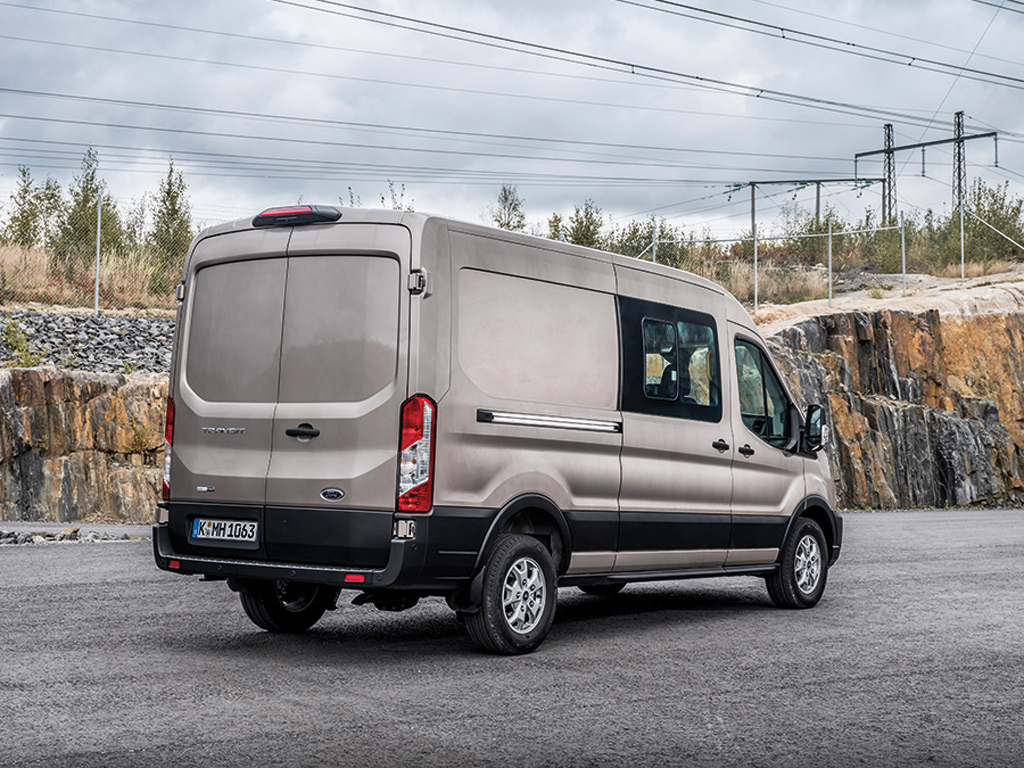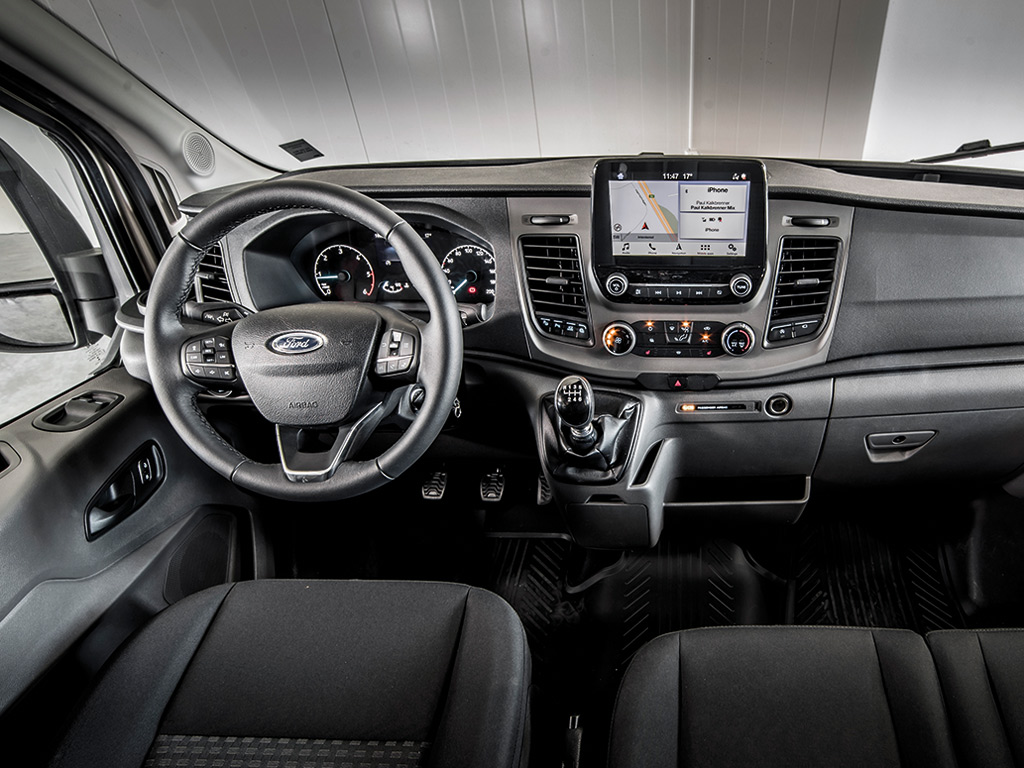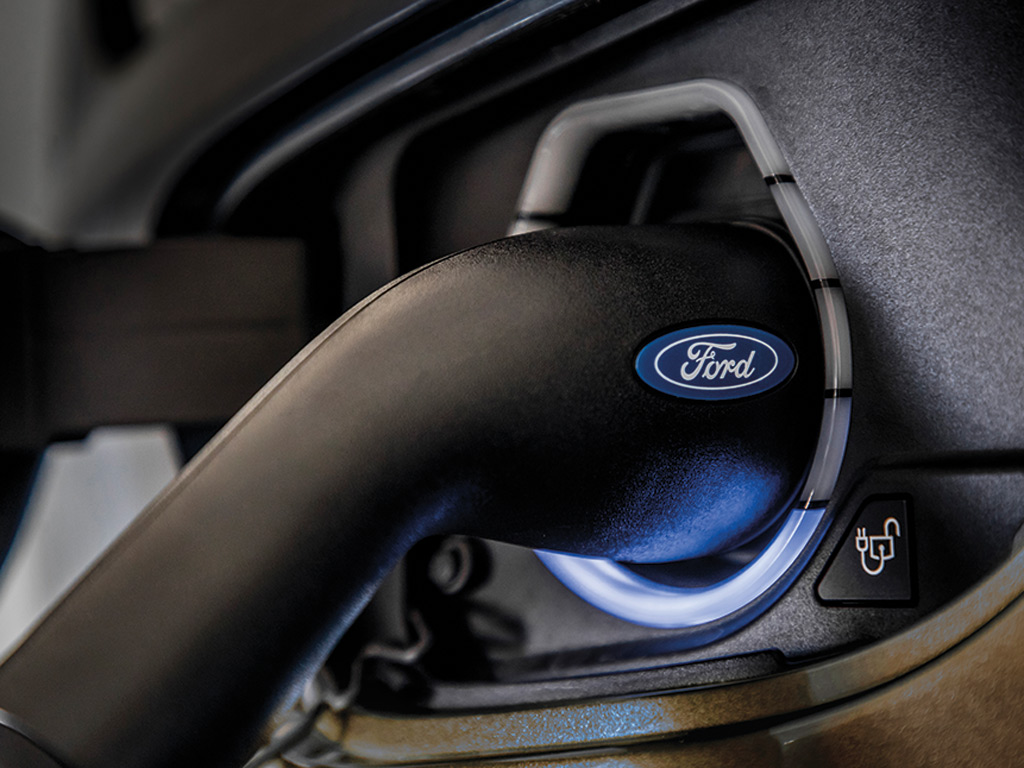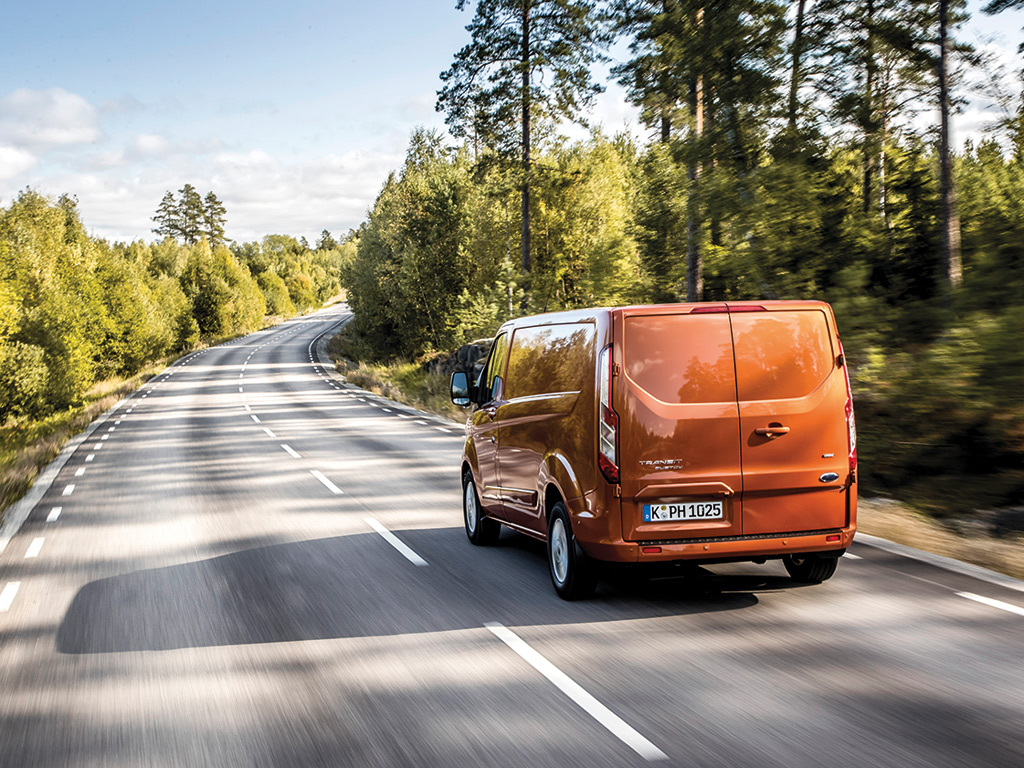Hybrid drivelines are to be offered on both Transit and Transit Custom, says Dan Gilkes.
Ford has updated its Transit and Transit Custom models with the launch of 48V mild hybrid (MHEV) technology, improved diesel performance and the release of the plug-in hybrid (PHEV) Transit Custom. The company has also added a raft of new technologies to the vans, along with a range of fleet-specific telematic offerings.
The EcoBlue 2.0-litre diesel engine remains the main power source, though it now comes with steel pistons, an upgraded turbocharger, higher fuel injection pressures and a variable flow oil pump. Combined with standard Auto Start-Stop on all models, the upgrades are said to offer a 7% improvement in fuel efficiency.
There are four power outputs, of 105hp, 130hp, 170hp and 185hp, on offer, all driving through a six-speed manual gearbox. Front-wheel drive models can also be specified with a six-speed automatic transmission and, from early next year, rear-drive vans will have the option of a 10-speed automatic transmission.
Ford is moving into the electrified van market with a 48V mild hybrid package for both Transit and Custom. Though the hybrid technology can be paired with any of the engines, the company will initially offer the MHEV with the 130hp models, to assess demand. The MHEV uses an integrated belt-driven starter generator and a 10Ah 48V lithium-ion battery, mounted beneath the passenger seat. The battery captures regenerative energy from the vehicle’s braking system, using it to help drive power-sapping electrical systems, like the electric power assisted steering and the air conditioning compressor, reducing effort for the engine.
The MHEV has an enhanced start-stop feature, which cuts the engine as soon as the vehicle is stationary, even when it is still in gear. Ford claims fuel savings of up to 3% in varied use, or as much as 8% when the van is used in a stop/start urban operation, on top of the 7% improvement from the new engine.
The MHEV system adds £700 to the price and around 27kg to the weight of the vans. However, Ford has been cutting weight elsewhere, claiming payload gains of up to 80kg for front-wheel drive vans and 48kg in rear-drive models.
If electric drive appeals, the Transit Custom PHEV is finally available to order. The van is driven by a 92.9kW electric motor, powered by a 13.6kWh battery pack, which delivers up to 35 miles of EV running. It has a 1.0-litre, three-cylinder petrol engine as a range-extender, taking the total driving range up to 310 miles. Ford is claiming up to 91.7mpg and 60g/km of CO2 emissions.
The battery is covered by an eight-year/100,000-mile warranty and takes 4.3 hours to fully charge on a domestic 240V supply, or 2.7 hours using a Type 2 16A supply. The PHEV has multiple driving modes, which allow the driver to use the van as a pure EV, to save electrical energy to the battery for zero-emission driving within a city centre, or to charge the battery while driving. Ford will introduce a geofencing module as standard next year that will automatically put the van into EV mode when it enters a predefined driving area, such as a ULEZ, as long as it has enough power in the battery to operate in EV mode.
By removing a heavy diesel engine and gearbox and replacing them with a much lighter petrol engine and compact lithium-ion battery pack, the Custom PHEV offers up to 1,130kg of load hauling ability. There is also no compromise on the van’s 6.0m3 load volume, as the battery is stored beneath the load floor.
The Transit Custom PHEV starts at £39,145, rising to £42,950 for the highest Limited trim level. It will also be offered in people-carrying Tourneo form. With a growing demand for electric vans, Ford’s initial plans to sell around 2,000 Transit Custom PHEVs in the first full year are now said to be looking a little conservative.
The bigger Transit gets a new interior, in line with the smaller Custom model. The dash now features the familiar tablet-style 8-inch touchscreen and customers can order Ford’s SYNC3 infotainment system, with voice commands.
There are plenty of assistance systems on offer, including Blind Spot Information System with Trailer Tow, Intelligent Adaptive Cruise Control with Traffic Sign Recognition and Pre-Collision Assist with Pedestrian Detection. Transit can also be had with a high-mounted rear-view camera, offering improved visibility with the rear doors open. There is also the option of a high-mounted LED downlighter to allow drivers to work behind the vehicle in poor light conditions. Powered side load doors will be offered early next year.
Enhanced connectivity
Ford is installing a standard FordPass Connect on-board modem in Transit, which can be used to access a range of telematic products for large and small fleet users. This will include access to live navigation updates and a WiFi hotspot within the vehicle.
There will be two levels of telematic system initially. FordPass Pro is intended for small fleets of up to five vans and can be run from a smartphone. It allows the manager to locate vehicles within the fleet and access van health data. Ford Commercial Solutions delivers a larger range of products for fleet users, providing managers with an easy-to-read dashboard that shows fuel use, idling times, harsh braking events and a host of operational data. The company is also working on a driver app, to provide daily check information and damage reports. Customers can also access the CAN Bus level data for third-party telematic systems if desired.
The Verdict
Ford’s engine changes and weight reductions offer increased power with reduced consumption and emissions. The MHEV system is an interesting step towards electrification, with a full BEV Transit expected by 2021. Until then, the PHEV offers a real alternative for urban van users.
FW Rating: ****1/2
Sector: Medium & large van Power: 105-185hp Load volume: 6.0-15.1m3 Drive: Diesel, MHEV, PHEV


